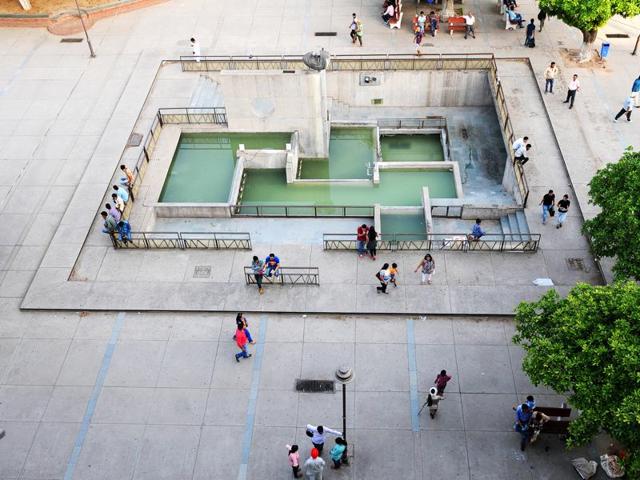Chandigarh: Sec 17, a bus from Lahore and the carnival that was
It was the September of 1965. The war with Pakistan was at its peak, and the Indian Army was marching in Pak territory towards Lahore when it came across a bus.
It was the September of 1965. The war with Pakistan was at its peak, and the Indian Army was marching in Pak territory towards Lahore when it came across a bus. It was a red double-decker, routinely carrying officials to man the Pakistan side of the Wagah-Attari checkpost. The bus was seized, and later brought to Amritsar, the custody given to RS Sarkaria, who was then general manager of Punjab Roadways at Pathankot. The plan was to run the bus — British-built, and unique in this part of the world then — from Hall Gate, the centrepiece of Amritsar, to the village Chheharta.

But, that did not quite work, as the overhanging wires and the architecture of the holy city became hindrances, recalls Sarkaria’s son Amrit Pal Singh, who also went on to serve the roadways. The war trophy had to be used, though. And what better place for that than the new capital of Punjab!
The bus was driven to Chandigarh and stationed in Sector 17. “The licence plate read LHE-592,” recalls military historian and long-time Chandigarh resident Mandeep Bajwa. It was a novelty ride for tourists and locals alike for a few months, but is long gone now, as spares were not available. So is the road on which it ran right through the Sector-17 market. “By 1980, in place of the road, the plaza came up,” recalls Tejbans Singh Johar ‘Tejee’, who runs a photo studio there since before the war. The fountains were built, and the place came alive.
Sector 17 had finally become what it looks like now, complete with the plaza, with its subtle, romantically dirty, yellow lamps; some vendors selling balloons and other wares; and a general sense of community with no hindrances of vehicles. Or, was it a large, vacant space that housed more dullness than people? Life in its abandon was still missing in what is described by many as ‘pattharan da sheher’ or the city of stones.
At what turned out to be the last years of long-drawn militancy in Punjab, writer and art-lover Maniki Deep, who had returned from London with her banker husband Gurdeep Singh Deep, sought to bring life to what she bluntly describes as a boring city. “We had seen the open-air performers in London, on the streets of Paris, in the lively markets of Frankfurt, et al. That’s what we visualised for this place,” she recalls.
The year was 1993. The Deeps got a go-ahead from the then Punjab governor-cum-UT administrator Surendra Nath, and a variety show began. Every Saturday, small stages would be set up with sponsorships and donations. There would be amateur dancers, painters, sculptors, who would get free food from Hot Millions as reward; and later some paid professionals too were called. A soft-drink company was the lead sponsor, but it remained a not-for-profit endeavour. “The idea was to bring joy to the city, and we succeeded,” Maniki says. A permanent stage too came up, and it became the go-to place. “That was the time before the malls took over,” she recalls.
With it, came allegations that they were making money as the space was given for free. Maniki says each show cost `20,000; they got most of it from the cola firm and the rest from a media house in return for advertising space for the two-hour show. In the June of 2007, after some bickering with the municipal corporation, officials from the MC and police came and stopped the programme. “That was the last show we held,” she says.
The civic body sought to make use of the space by renting it out for promotional shows. But their frequency has reduced and the charm is gone. “The Saturday carnival brought footfall, indeed. Something like that is required to liven up the market,” says Ajay Arora, owner of Capital Book Depot.
Traders did not always see that logic. The market association in the late ’90s even filed a case against the Saturday shows, arguing that it disturbed people and adversely affected business. “The courts did not agree, and the plea was defeated,” says Maniki.
Now, with existing traders desperate, newer business wary of the high rents, and people generally preferring malls, the administration and civic body too talk of “live entertainment” and “optimum use of the plaza” in speeches and press handouts. It has not gone beyond that.
Does it really take that long to find the right kind of people to execute what is a time-tested formula across the world? Or, do we need another bus from Lahore? That may take a war. We all know the easier way.
(This is the second in a series about the past, present and future of Sector 17)
Read | Story of Sector 17: Chandigarh’s heart has grown older than the city
aarish.chhabra@hindustantimes.com





